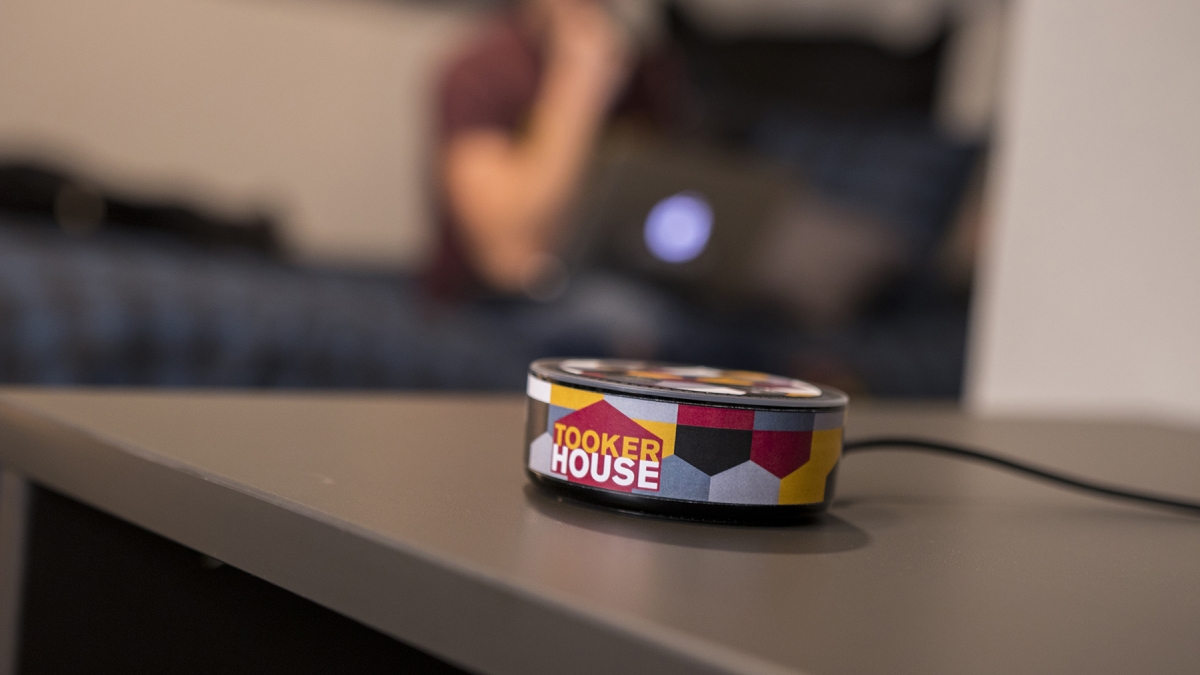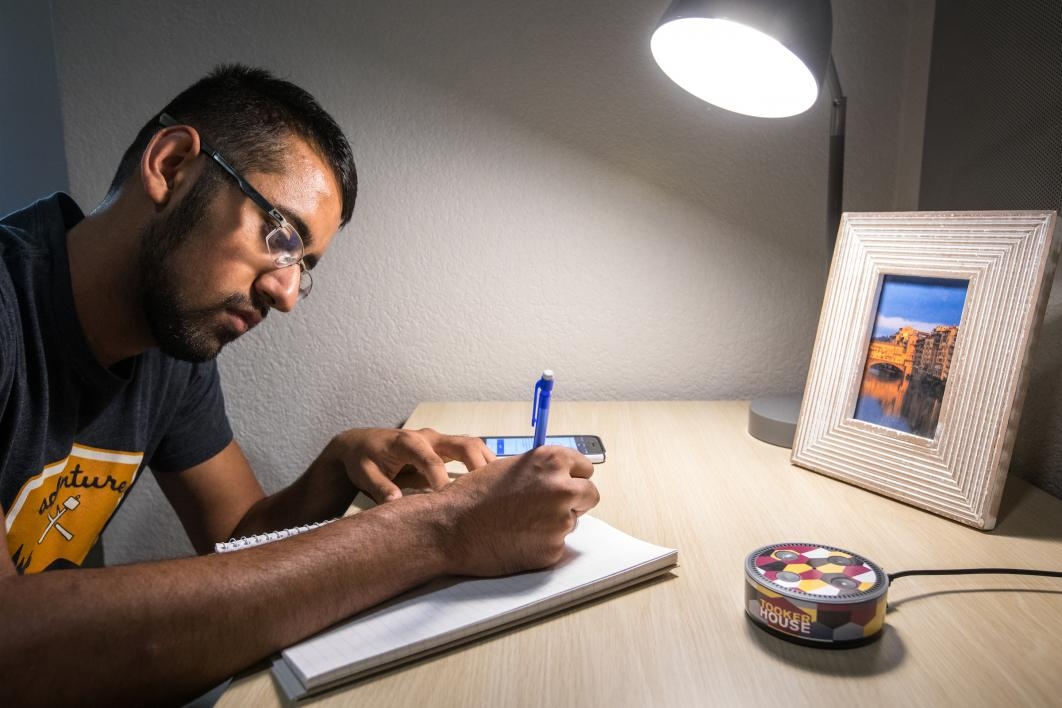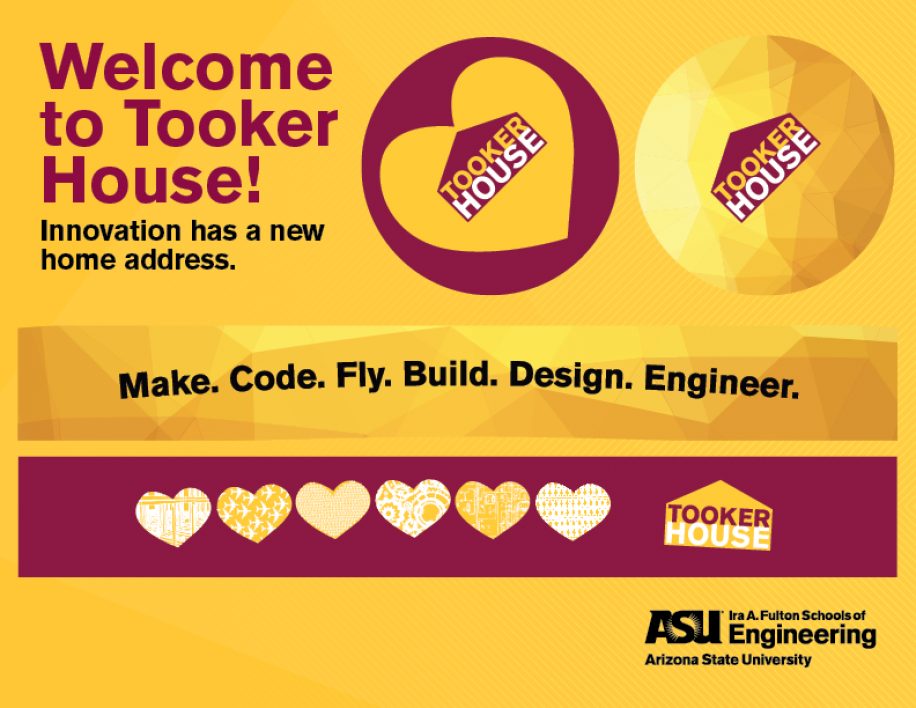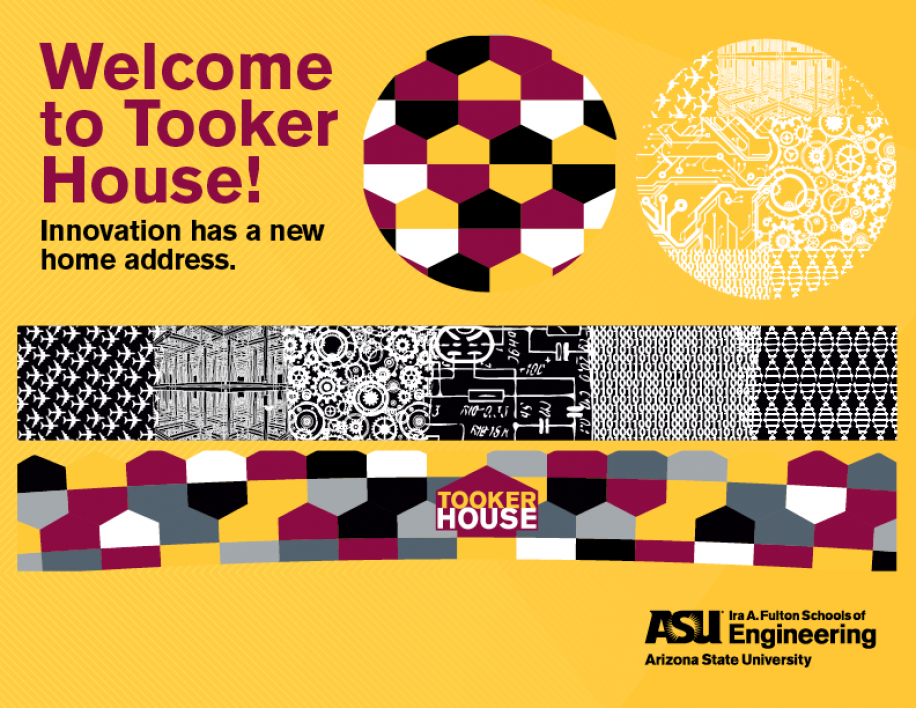Amanda Nguyen, a senior majoring in biomedical engineering at Arizona State University, has had the latest wave of technology in her hands for 24 hours.
As a resident in ASU’s newest and most high-tech dorm for engineers, Nguyen chose to take part in a first-of-its-kind voice-technology program on a university campus by receiving a new Amazon Echo Dot, a hands-free, voice-controlled device that sends and receives messages, controls smart home devices, provides information and more.
In the first 24 hours of having the latest technology at her fingertips, Nguyen has been exploring what her new device can do. So far, she has used it to wake herself up, play music and do random things.
“It tells me jokes,” Nguyen said. “It barks and meows too if you ask it.”
But Nguyen, an event planner in the Ira A. Fulton Schools of Engineering, has bigger plans for it.
“I want to be able to incorporate it into an event I’m planning,” she said. “I’m really excited for everyone to have one.”
The ASU program, with support from the Amazon Alexa team, is designed to enhance students’ ASU experience by giving them touch-free access to information and services tailored to campus living — and prepare some of them to become leaders in voice-technology development.
As part of the effort, engineering students moving into Tooker House, a new residence hall for engineers on the Tempe campus, can choose to receive a new Amazon Echo Dot and become part of the first voice-enabled residential community on a university campus.
In addition, students like Nguyen can sign up for courses that teach new concepts focused on building voice-user interfaces with Alexa, Amazon’s digital assistant. Incoming freshmen engineering students will be able to build their own Alexa skills, or capabilities, and join the growing community of voice developers.
Video by Ken Fagan/ASU Now
ASU also will introduce an ASU-specific Alexa skill to enhance the campus experience for students, faculty, staff and alumni. Anyone with an Alexa-enabled device can use the “ASU” skill to get information about the university and the campus.
“With voice-enabled devices becoming more prevalent in our connected world, it only makes sense to bring these capabilities to our campus,” said John Rome, ASU’s deputy chief information officer. “By working with Amazon to create the first voice-enabled campus, we’re furthering ASU’s position as the No. 1 university in the U.S. for innovation.”
“We are excited to work with ASU on this program, which will power their voice-enabled residence hall with Alexa and equip students with the in-demand skills they’ll need when they graduate,” said Steve Rabuchin, Amazon vice president of Alexa. “The university shares a vision with us for the future of voice, and we believe it’s paramount to engage students in a way that sparks their imaginations and inspires them to build the technology of tomorrow.”
The voice initiative includes three undergraduate engineering courses this semester that will add voice-user interface development, with a fourth course planned for this spring. Engineering students can build their own Alexa skills, both independently and in the classroom, using a collection of application program interfaces, tools, documentation and code examples
“Once they are familiar with the devices, they are going to want to further develop their own skills and begin integrating that technology — the hardware and the skills — into other projects,” said Octavio Heredia, Fulton Schools’ Global Outreach and Extended Education director. “Our focus is putting this technology into the hands of our students in a way that will build an ecosystem that supports voice technologies throughout the ASU campus.”
It furthers ASU’s evolution toward a “smart campus,” a vision for a future university setting that combines sensing, connectivity and data analytics to inform decision making, optimize operations and energy efficiency, and create a highly personalized campus experience for every student, professor, staff member and alumnus.
“It’s about innovation and ensuring our graduates are equipped to play a leadership role as voice-enabled technology becomes part of everyday life in homes, shopping malls, workplaces and cities,” said Kyle Squires, dean of ASU’s Fulton Schools of Engineering. “Bringing voice technology into our classrooms and onto our campus reflects our commitment to both the breadth and depth of the student experience at the largest engineering school in the nation.”
ASU’s vision for a connected campus is incorporating the Internet of Things, big data and analytics not only for facilities management (energy, water, waste management, predictive maintenance, etc.), but also as a mechanism to deliver a high-quality, personalized education experience to every ASU student.
ASU launched its journey to a smart campus with a smart Sun Devil Stadium — an initiative that so far includes standardized Wi-Fi capabilities and sensors in the end zones that analyze humidity, temperature, sound and vibration, enabling adjustments to be made accordingly. Moving forward, the tech will allow enhanced fan experiences — including cellphone app notifications relevant to the game or stadium event, parking and concession information and a range of interactive experiences.
The sensing and technology initiated in Sun Devil Stadium will be broadened to support green benefits across campus, to include lighting, waste and energy management systems, traffic control and voice-activated maps and information centers.
Also on deck are smart fleet management systems for golf cart reservations and tracking; navigational systems for all transportation modes; and residence hall efficiency systems that adjust resources based on time-of-day activities.
Arizona State University has been ranked No. 1 in innovation by U.S. News & World Report for two years in a row, staying the course by imbedding innovation into its schools, departments, athletics and student experiences.
ASU is intent on delivering world-class, on-campus and digital experiences by placing students, faculty, administrators and alumni at the heart of design. These planned features, designed to facilitate student-faculty engagement, include:
• smart classrooms with automated attendance that uses facial-recognition systems
• systems that measure classroom engagement and provide insights about topics that may need expansion
• interactive robots that allow students to attend classes remotely
• anonymous polling so faculty can measure comprehension in real time
• faculty-student messaging
• “wearables” that replace ID cards for access to campus facilities (classrooms, residence halls, etc.), and also provide emergency location services, campus alerts and critical medical information
• digital assistants, powered by Amazon voice-activated technology, that provide on-demand information, like library and dining hall hours, the latest school news, and upcoming school holidays
More Science and technology
Largest genetic chimpanzee study unveils how they’ve adapted to multiple habitats and disease
Chimpanzees are humans' closest living relatives, sharing about 98% of our DNA. Because of this, scientists can learn more about human evolution by studying how chimpanzees adapt to different…

Beyond the 'Dragon Arc': Unveiling a treasure trove of hidden stars
NASA's James Webb Space Telescope (JWST) has set a new milestone: capturing images of over 40 individual stars in a galaxy so distant that its light has traveled since the universe was only half its…

ASU selected as home and partner for CHIPS and Science Act-funded national facility for semiconductor advanced packaging
Following a week where a spirited effort by the Sun Devil football team captured the nation’s attention in the Peach Bowl, it is Arizona State University’s capability as a top-tier research…



